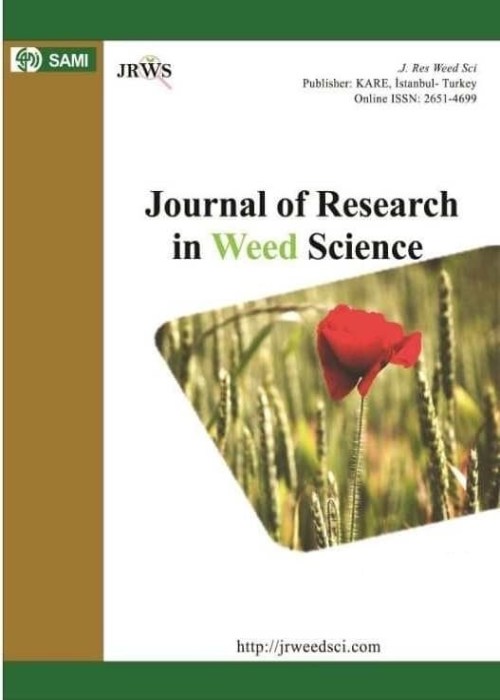Studies on shifts in weed flora in maize (Zea mays L.) in Kangra district of Himachal Pradesh
Author(s):
Article Type:
Research/Original Article (بدون رتبه معتبر)
Abstract:
Over centuries, agricultural practices have undergone the transition from extensive and traditional to intensive and specialized. Thus, the weeds colonizing cultivated fields are subjected to major shifts due to increased use of herbicides, fertilizers and tillage. There are a total of 176 weed species in Agro-ecosystems of Himachal Pradesh and not less than 46 in maize. Weeds, in maize, are hardier in nature and compete with the crop significantly reducing its yield. Also, slow initial growth and wider spacing favour the growth of weeds even before crop emergence. Commelina benghalensis, Ageratum conyzoides, Echinochloa colona, Panicum dichotomiflorum, Cyperus iria, Digitaria sanguinalis, Polygonum alatum and Aeschynomene indica were dominant weeds observed under Kangra district conditions of Himachal Pradesh. The phytosociological study showed that the species which invaded the non-cropped lands are increasingly infesting the cultivated fields. In 2008, most abundant weed was Fimbristylis miliacea followed by Cyperus difformis, Eragostis tennela, Ageratum conyzoides, Ammannia baciferra, Bidens pilosa and Hackelia uncinata. In 2018, Ageratum conyzoides was the most abundant followed by Phyllanthus niruri, Panicum dichotomiflorum, and Commelina benghalensis. Ageratum conyzoides was the most important weed in 2008 followed by Echinochloa colona, Fimbristylis miliacea, and Digitaria sanguinalis, in that order. The Important Value Index (IVI) for individual weed species in the maize field crop in 2018 indicated that Ageratum conyzoides was again the most important weed species followed by Phyllanthus niruri, Echinochloa colona, Alternanthera philoxeroides, Aeschynomene indica, Commelina benghalensis and Digitaria sanguinalis. The weed species viz. Ammannia baccifera, Bidens pilosa, Brachiaria ramose, B. reptans, Dactyloctenium aegyptium, Fimbristylis miliaceaum, Galinsoga parviflora, Hackelia uncinata, Ipomoea pestgridis, and Physalis minima those recorded in 2008 were not found in the survey of 2018. Aeschynomene indica, Alternanthera philoxeroides, Amaranthus viridis, Echinochloa crusgalli and Oxalis sp. recorded during 2018 were not found in the survey of 2008.
Keywords:
Language:
English
Published:
Journal of Research in Weed Science, Volume:2 Issue: 3, Sep 2019
Pages:
230 to 240
magiran.com/p2648330
دانلود و مطالعه متن این مقاله با یکی از روشهای زیر امکان پذیر است:
اشتراک شخصی
با عضویت و پرداخت آنلاین حق اشتراک یکساله به مبلغ 1,390,000ريال میتوانید 70 عنوان مطلب دانلود کنید!
اشتراک سازمانی
به کتابخانه دانشگاه یا محل کار خود پیشنهاد کنید تا اشتراک سازمانی این پایگاه را برای دسترسی نامحدود همه کاربران به متن مطالب تهیه نمایند!
توجه!
- حق عضویت دریافتی صرف حمایت از نشریات عضو و نگهداری، تکمیل و توسعه مگیران میشود.
- پرداخت حق اشتراک و دانلود مقالات اجازه بازنشر آن در سایر رسانههای چاپی و دیجیتال را به کاربر نمیدهد.
In order to view content subscription is required
Personal subscription
Subscribe magiran.com for 70 € euros via PayPal and download 70 articles during a year.
Organization subscription
Please contact us to subscribe your university or library for unlimited access!


